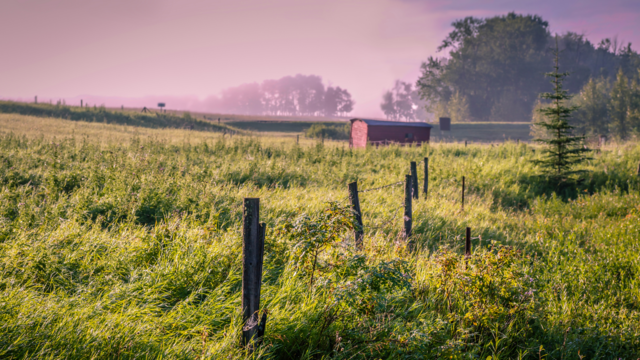Clarifications of Subsurface Ownership Rights

In recent decades, the Alberta government has amended several pieces of legislation to address some of the uncertainties over subsurface resource rights in the areas of natural gas storage and the ownership of both coalbed methane and the pore space beneath the land for the purpose of storing captured carbon. In the process of clarifying these resource rights, the government has effectively removed some people’s claims to certain subsurface resources. Each of these initiatives will be discussed in turn.
What is Meant by Pore Space?The use of the term “pore space” in the 2010 carbon capture and storage legislation is a very unusual way to describe a property interest in beneath the surface of the land. A pore usually means a minute space that cannot be observed by the naked eye. The meaning of the legislation is not initially clear and it caused great concern to some landowners, who wondered just how much land the Crown had taken when it declared that it owned all “pore space.” Regulations under the Act provide some clarification by defining “pore space” to mean “the pores contained in, occupied by or formerly occupied by minerals or water below the surface of the land”. Nevertheless, landowners wondered whether it might include, for example, minute spaces in the topsoil that had once been occupied by water. The legislation could have removed many of these fears by declaring, that the Crown owned only pore space beneath a specified depth beneath the surface of the land. |
In 1994, Alberta was faced with an industry trend to store produced natural gas underground. Uncertainty over how industry should obtain storage rights threatened to hamper the growth of this important sector. In order to overcome this problem, the government passed legislation which declared as a general principle that the owners of petroleum and natural gas in any land also owned the storage rights in that land. The only exception occurred where a subsurface cavern had been created through the recovery of a mineral. In that case, the storage rights with respect to the subsurface cavern belonged to the owner of the mineral that had been removed.
In recent times, the Legislature has taken a more definitive approach to clarifying mineral ownership. In 2010, the Alberta government clarified the ownership of coalbed methane. Early transfers of land from railway companies to farmers often meant that underground coal was owned by the railway company, while natural gas belonged to the surface owner. Over the past decade, as the commercial value of coalbed methane became clear, disputes over its ownership arose between the owners of natural gas (who were often surface owners) and the owners of subsurface coal. Those disputes often involved land formerly owned by the CPR. To prevent costly and uncertain litigation, the Legislature passed an amendment to the Mines and Minerals Act that now proclaims that “[c]oalbed methane is hereby declared to be and at all times to have been natural gas.”
The amendment made an exception for owners of natural gas or coal who had specifically reserved or granted a right to coalbed methane before December 2, 2010. In every other case though, the legislation meant that whoever owned the natural gas also owned (and had always owned) the coalbed methane. This amendment went much further than the earlier gas storage legislation, not only because it was retroactive, but also because it clearly stated that a person affected by the amendment has no right to sue the government for damages or compensation. The effect of the amendment was to remove any claim that the owners of coal might also own coalbed methane with no recourse or compensation.
While the coalbed methane legislative amendments were meant to settle disputes between private parties, the Carbon Capture and Storage Statutes Amendment Act, 2010 was passed to resolve potential disputes between private property owners and the government. Carbon capture and storage (CCS) is an important part of the province’s climate change strategy, and the purpose of this amendment was to ensure that the Crown could grant legally secure rights for carbon capture and storage schemes. The amendment declared that all underground pore space was owned by the provincial Crown. Before the amendment, the owners of petroleum and minerals had probably owned at least some of the pore space in their land, and surface owners may have had a claim to pore spaces that were occupied by water. However, the amendment eliminated all competing claims to the ownership of pore space. It specifically stated that this declaration did not amount to expropriation and did not create a right to sue for damages or compensation. Unlike the coalbed methane legislation, this amendment was not intended to resolve private disputes, but to ensure that the government held all the property rights required to meet its carbon capture and storage goals.
The CCS legislation illustrates the legislature’s power to indirectly diminish individual property rights without providing compensation. The Crown clearly removed any rights the mines and mineral owners, and possibly surface owners, had previously held in pore space and declared that all pore space was now owned by the Crown. This “taking” would normally have created a right of compensation to the owners whose property rights were transferred to the Crown; however, the doctrine of parliamentary sovereignty allows the Crown to override the presumption of compensation.